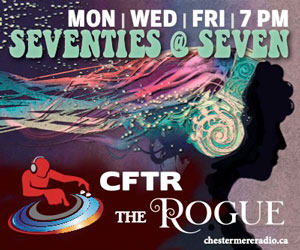India Pale Ale, or IPA for short, has been the most popular craft beer style for many years. IPA was originally designed as a cranked up version of the English Pale Ale, made with extra hops and higher alcohol content to preserve the beer shipped to British soldiers stationed in India in the 18th century.
The original British IPA style was fairly subdued, but has branched into many unique expressions, as different craft brewers put their own spin on an old style.
The biggest change came in the 1980s, when California brewers in the fledgling craft beer scene started using American hops from Oregon instead of the traditional English hops. The Yankee hop varietals contained higher levels of bittering alpha acids, and are known for their citrusy and pine resin flavours.
This so-called West Coast IPA has taken North America by storm, with pretty much every craft brewer having at least one in their regular rotation. One of the first West Coast IPA brews to come to Alberta was the Wild Rose IPA, a scrappy little upstart who put a brewery in an old Quonset hut on the decommissioned army barracks in Calgary way back in 1996.
Wild Rose Brewing has since been acquired by Ontario-based Sleemans, which was acquired by Tokyo-based Sapporo Breweries, so it may be a stretch to consider Wild Rose a local beer at this point.
Fortunately, their corporate overlords have been wise enough to not kill the golden goose, and have taken a hands-off approach that lets Wild Rose keep on producing the beers that we know and love.
While the West Coast IPA has been the thundering juggernaut of the IPA family, a new challenger has arisen on the opposite coast, in the form of the New England IPA, first made popular by adventurous brewers in Vermont, and has now spread across North America, with plenty of local Alberta brewers producing their own interpretations.
The NEIPA style differs from the older West Coast IPA in many subtle ways, the first of which will be obvious when the glass is poured, as the NEIPA is typically hazy due to heavier use of wheat and oat malts, instead of a 100% barley grain bill filtered to remove all haze.
On the palate, fruit-forward hops give the NEIPA juicy and tropical notes, while the hop bill cuts back on the bittering hops in favour of late additions of aromatic hops, so the perceived bitterness of a NEIPA is much lower than its western cousins.
My favourite is the Cliff Claven NEPA from Revival Brewcade in Calgary’s hip Inglewood district, and not only because I can play vintage pinball and arcade games while sipping a hazy golden pint fresh from the brass teats, but because the rush of tropical fruits and complex bouquet of aromatic hops make it a delight.
Just a few blocks away is Cabin Brewing, whose Super Saturation NEPA is made with locally grown wheat and oat malts, combined with a mélange of hops practically bursting with tropical flavours, and a silky-smooth mouthfeel that had me coming back for more.
With the Barley Belt area of Calgary having an ever-growing number of craft breweries, I had only to step around the corner from Cabin Brewing to find Banded Peak Brewing, whose Big Brother NEPA poured a hazy orange into my glass, with tropical melon flavours erupting into the air with every whiff, followed by plenty of floral hops for an aromatic but not overly bitter beer.
Looking a little north to Blindman Brewing in Lacombe, this small-town brewer cranks out a seemingly endless variety of different styles, with their NEPA widely available at Co-op and other booze merchants across Alberta. I enjoyed one at home, which poured a hazy orange into my glass, and burst with mango and pear notes from the special yeasts, with generous additions of aromatic hops for a floral finish without being too bitter.
These are but a few of the countless NEPA / NEIPA styles that have popped up in Alberta recently, so if you are a long-time IPA drinker that has grown weary of the ever-increasing levels of bitterness as craft brewers one-up each other with hoppy beers, now is the time to try the less extreme options inspired by the New England states, and now made locally here in Alberta.







